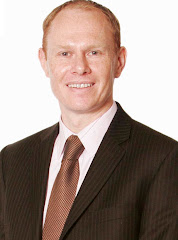A colleague of mine recently published a paper Software Testing is Easy and Other Myths (http://tinyurl.com/28aymok) which makes for a great read.
This caused me to reflect on a recent assignment I completed for a client where I assisted them in developing an operating model, business case and implementation roadmap for a testing center of excellence. The engagement was challenging and ultimately successful and for me once again proved that some of the often repeated critical success factors for consulting projects such as these are true:
1. Executive sponsorship. We had great executive sponsorship which allowed us to cut through a lot of the 'noise' associated with projects such as these quickly. I can contrast this with similar engagement I undertook a couple of years ago in the same sector where this wasn't the case and the project was consequently less successful.
2. Staff buy-in. The creation of the CoE is going to mean a lot of change for existing testing (and non testing) staff. We recognised this early on and decided that we needed to make testing a recognised and supported career path and make people feel that they were part of a team/community. Some of the things we did in this regard included making communications a key component of the rollout plan and defining a testing career model with associated training and external certification. The idea was to make testing an attractive and valued career path in the organisation. Without this why would staff engage with the programme at all?
3. Understand the as-is situation. Ultimately the Testing Center of Excellence was being created for two reasons - to improve efficiency and quality. However to measure the success of the CoE it is important to understand and measure the current situation so that progress can be objectively assessed. This is often easier said than done as many of the metrics or KPIs that you would like to track often do not exist today and need to be created or estimated. We certainly had to do this on this engagement but clearly called out where we had extrapolated and committed to start building more accurate as-is metrics as the CoE was rolled out.
While there were many other critical elements to the success of this engagement the three above once again proved the most critical. We are just about to start the first phase of the rollout of the center of excellence which no doubt will prove just as challenging, interesting and successful. In either case I'll let you know!
